#historyofscience
Explore tagged Tumblr posts
Photo

Healing with Poisons: Potent Medicines in Medieval China
Healing with Poisons: Potent Medicines in Medieval China is a groundbreaking work delving into the realm of du, meaning toxic or poison, within Chinese pharmacy. Taking readers to China during the 3rd to 10th centuries, a crucial period for the systematic development of knowledge surrounding du, Yan Liu examines how physicians, officials, and other historical figures conceptualized and utilized potent substances. This book contributes to the ongoing scholarly discussion on pharmaceuticals and reveals the intriguing fluid materiality of medicines. It further challenges the notion that Chinese medicine is natural, mild, and predominately focuses on restoring the body's harmony.
Continue reading...
114 notes
·
View notes
Link
Explore the fascinating blend of alchemy, magic, and science in the Renaissance! ⚗️✨ Discover how mystical practices shaped modern scientific thought. https://illuminatingfacts.com/the-role-of-alchemy-and-magic-in-renaissance-science/
#RenaissanceScience#Alchemy#HistoryOfScience#MagicAndScience#HistoricalFacts#Mysticism#ScienceHistory#ExploreThePast#IntellectualEvolution
4 notes
·
View notes
Photo

The Plantin-Moretus Museum is the original residence and printing house of the Plantin-Moretus publishing family in the heart of Antwerp. It showcases three hundred years of book-printing art and has on display some of the oldest printing presses in the world. The remarkably well-preserved house museum takes the visitor through a tour of the craft, technologies and everyday practices of the first industrial scale printers in Europe. Additionally, one can view manuscripts, incunabula and original prints as well as a rich collection of art, including portraits by Rubens, a close friend of Balthazar I Moretus. #printing #historyofprinting #printisnotdead #printingpress #bookprinting #woodcutprint #copperplate #lithography #plantinmoretus #plantinmoretusmuseum #printmaking #historyofart #historyofscience #historyoftechnology #rubens #antwerp #belgium #visitbelgium #belgiumhistory #europeanhistory #westerneurope #benelux #flemish #historymuseum #museumfromhome #museumlover #booklover #bookaddict #bookcommunity #bookstagram (at Museum Plantin-Moretus) https://www.instagram.com/p/CqFPiNIrtqv/?igshid=NGJjMDIxMWI=
#printing#historyofprinting#printisnotdead#printingpress#bookprinting#woodcutprint#copperplate#lithography#plantinmoretus#plantinmoretusmuseum#printmaking#historyofart#historyofscience#historyoftechnology#rubens#antwerp#belgium#visitbelgium#belgiumhistory#europeanhistory#westerneurope#benelux#flemish#historymuseum#museumfromhome#museumlover#booklover#bookaddict#bookcommunity#bookstagram
7 notes
·
View notes
Video
The Legacy of Thomas Edison #famousscientists
#youtube#famousscientists#thomasedison#EdisonLegacy#edisonlightbulb#historyofscience#EdisonVision#science#history
1 note
·
View note
Text
#IsaacNewton#Physics#Mathematics#LawsOfMotion#UniversalGravitation#Optics#HistoryOfScience#ScientificRevolution#ModernScience#InfluentialScientists#GroundbreakingDiscoveries#NewtonianPhysics#ScienceGenius#ScientificLegacy
0 notes
Text
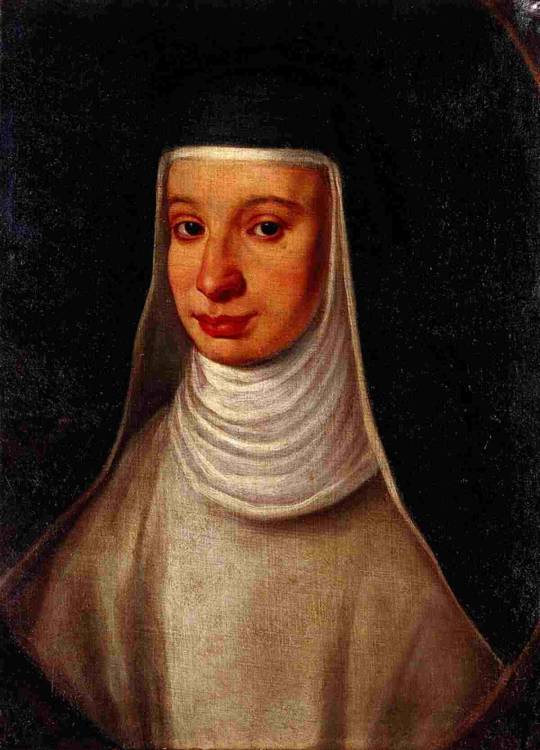
Discover the intriguing life of Virginia Galilei, daughter of the renowned scientist Galileo Galilei. Follow her journey from Padua to the Convent of San Matteo in Arcetri, exploring her contributions and relationship with her father. Delve into her story and the legacy she left behind in the world of science and beyond.
#Discover the intriguing life of Virginia Galilei#daughter of the renowned scientist Galileo Galilei. Follow her journey from Padua to the Convent of San Matteo in Arcetri#exploring her contributions and relationship with her father. Delve into her story and the legacy she left behind in the world of science a#VirginiaGalilei#GalileoGalilei#HistoryofScience#WomeninScience#ItalianHistory#RenaissanceWomen
1 note
·
View note
Text
youtube
youtube
youtube
It’s #WorldNatureConservationDay, and we’re celebrating with a trio of short videos about the environment and ecology!
#world nature conservation day#nature conservation#conservation#sea#tree#food web#etymology#history#words#language#linguistics#word nerd#wordnerd#historyofscience#history of english#history of the english language#historical linguistics#lingcomm#lingblr#scicomm#video#youtube#Youtube
0 notes
Text
Newton, I, and other scholars
(Original artwork: A Philosopher Lecturing on the Orrery, 1766)
#sciencehistory #historyofscience #isaacnewton #newton #selfship #selfshipping #leibniz #spinoza #descartes #rationalist #philosopher #mathmatician #procreate #illustration
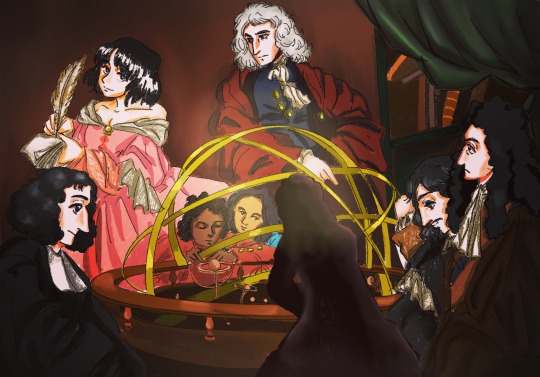

9 notes
·
View notes
Video
youtube
Instrumentation in Science History #sciencefather #historyofscience #s...
0 notes
Text

Send from Sansgreet Android App. Sanskrit greetings app from team @livesanskrit .
It's the first Android app for sending @sanskrit greetings. Download app from https://livesanskrit.com/sansgreet
Subhash Kak.
Subhash Kak (born 26 March 1947, Srinagar) is an Indian-American computer scientist and a Hindutva-based historical revisionist. He is the Regents Professor of Computer Science Department at Oklahoma State University–Stillwater, an honorary visiting professor of engineering at Jawaharlal Nehru University, and a member of the Indian Prime Minister's Science, Technology and Innovation Advisory Council (PM-STIAC).
#sansgreet #sanskritgreetings #greetingsinsanskrit #sanskritquotes #sanskritthoughts #emergingsanskrit #sanskrittrends #trendsinsanskrit #livesanskrit #sanskritlanguage #sanskritlove #sanskritdailyquotes #sanskritdailythoughts #sanskrit #resanskrit #subhashkak #srinagar #indoamerican #computerscientist #celebratingsanskrit #computerscience #oklahomauniversity #stillwater #nitsrinagar #iitdelhi #cryptography #historyofscience #quantum #quantumcryptography #kashmir
#greetingsinsanskrit#sanskritgreetings#sanskrittrends#trendsinsanskrit#livesanskrit#sanskrit#celebratingsanskrit#incredibleindia
0 notes
Text
The Anatomical Angel a dissection of a Woman's back, Jacques Fabien Gautier d'Agoty 1746.
#anatomy
#anatomyart
#anatomicalart
#medicine
#humanbody
#biology
#artwork
#arthistory
#historyofscience
#anatomyclass
#anatomicalscience
#anatomyandphysiology
#humanbiology
#art
#macabreart
#macabre
#oddities
#curiosities
#itsonlyarsenic
instagram
0 notes
Photo

Origin Story: A Big History of Everything
Every culture, religion, and community has its narrative of how this world originated. This narrative tells the people in that community why our landscapes look the way they are, why we have different seasons, why the sky rains, and, more importantly, how we humans came to be. Without an explanation of what makes us us, one is vulnerable to feelings of misery and hopelessness. History has been used by people since the beginning of civilization as a tool telling us that we are meaningful beings. This is why every country and community focuses greatly on unifying one narrative – or one history – to be taught to their youngsters.
By expanding history's range to 13.7 billion years, the age of the universe, David Christian makes history truly interdisciplinary.
In 1989, David Christian, Distinguished Professor of History at Macquarie University, recognized a division in modern academia. Different disciplines, such as physics, philosophy, literature, and chemistry, rarely have conversations with each other. This makes it difficult for humanity as a whole to share a common origin narrative. After all, the common goal for both scientists and artists is to better serve humanity. To unite seemingly unrelated disciplines, David Christian developed a new history subject called "Big History." Big History examines the origin of humanity not from the perspective of conventional historical studies, where history begins at the start of civilization, but from the Big Bang.
Continue reading...
36 notes
·
View notes
Photo
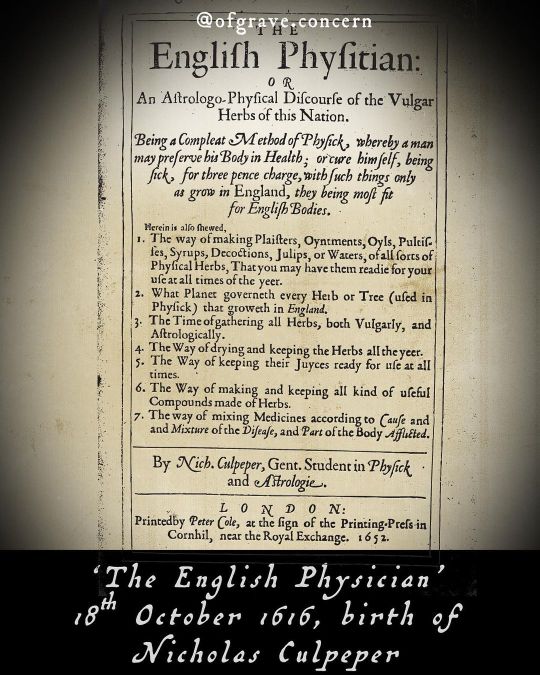
18th October 1616, birth of the English botanist, herbalist, physician, and astrologer Nicholas Culpeper. Inspired by the work of medical reformers such as Paracelsus (whose birthday was last week), Culpepper published his books of medical and pharmaceutical knowledge in English. By publishing in English, Culpepper’s works could be read by ordinary folk healers who could not read Latin. His most known work was ‘The English Physician’ published in 1653, it is known today as Culpeper’s Herbal. His questioning of traditional methods and knowledge, pairing herbs and planetary influences to counter illnesses and disease; led him to be accused of Witchcraft in 1642. One of his ancestors was Thomas Culpeper, the secret lover of Queen Catherine Howard, fifth wife of Henry VIII who was sentenced to death by her husband, and beheaded on the 13 February 1542. The bottles shown are handmade from casts taken from actual 18th and 19th century medicine bottles, with original artwork inspired by actual medicine history are available on the website. www.ofgraveconcern.com/apothecarybottlesandjars Follow @ofgrave.concern for more tales of dark history, and original historically inspired artwork from 1348 - 1848. #onthisdayinhistory #botany #herbalists #herbalism #astrologyposts #astrologers #historyofscience #sciencehistory #culpeper #nicholasculpeper #folkmedicine #herbalmedicinecabinet #herbalremedies #herbalhistory #historyofmedicine #medicinehistory #thisdayinhistory #17thcentury #paracelsus #medicalhistory #interestingfacts #medicinebottle #medicinebottles #antiquebottles #ceramicartists #ceramicbottle #ceramicbottles #medicinehistory #bottleart #bottleartwork https://www.instagram.com/p/CWeI57vPdtW/?utm_medium=tumblr
#onthisdayinhistory#botany#herbalists#herbalism#astrologyposts#astrologers#historyofscience#sciencehistory#culpeper#nicholasculpeper#folkmedicine#herbalmedicinecabinet#herbalremedies#herbalhistory#historyofmedicine#medicinehistory#thisdayinhistory#17thcentury#paracelsus#medicalhistory#interestingfacts#medicinebottle#medicinebottles#antiquebottles#ceramicartists#ceramicbottle#ceramicbottles#bottleart#bottleartwork
2 notes
·
View notes
Photo
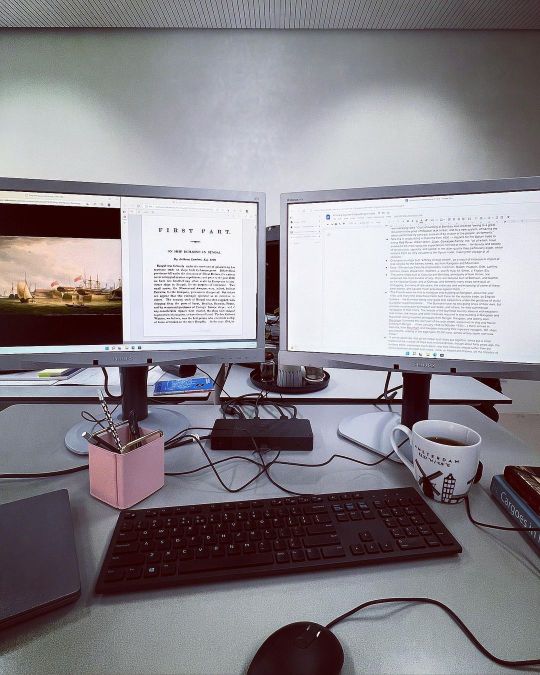
Workspace for the foreseeable future. 🖇💼👩🏽💻 #workspace #workstudy #studygram #studymotivation #researchlife #historicalresearch #historynotes #historynerd #historyofscience #maritimehistory https://www.instagram.com/p/Ciz7hzRo4N0/?igshid=NGJjMDIxMWI=
#workspace#workstudy#studygram#studymotivation#researchlife#historicalresearch#historynotes#historynerd#historyofscience#maritimehistory
2 notes
·
View notes
Photo

In light of the latest moon news, we're sharing a stereographic reproduction of negatives created by Henry Draper in the 1860s. Draper was a physician and pioneering astrophotographer who captured images of the moon, the transit of Venus, the Orion Nebula, and the spectrum of Jupiter.
Henry Draper, Full moon from negatives taken by Prof. H. Draper, with his silvered glass telescope, ca. 1863 (printed ca. 1875). Albumen on stereograph mount.
10 notes
·
View notes
Photo
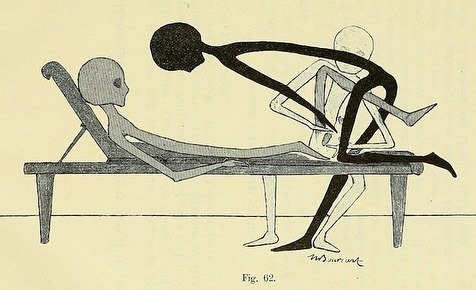
Gynecological Gymnastics from Outer Space... 👽⠀ ⠀ A few of the many uncanny diagrams to be found in Die Heilgymnastik in der Gynaekologie: und die mechanische Behandlung von Erkrankungen des Uterus und seiner Adnexe nach Thure Brandt (1895), translated from German as “The physiotherapy in gynecology and the mechanical treatment of diseases of the uterus and its appendages by Thure Brandt”. As the title implies the gynecological exercises are based on those invented by the Swedish obstetrician and gynecologist, Thure Brandt (1819-1895). Brandt began treating women in 1861, combining massage, stretching, and general exercise as a form of treating gynecological conditions. After his methods were examined in Jena by German gynecologists in 1886, they became widely used in Europe. The images in this particular text are eye-catching today less for the gynecological technique they depict but more the bizarre similarity between the rakishly thin figures employed in demonstrating the exercises (no doubt an attempt to de-sexualise the images) and the figure of the so-called “Grey Alien” – thin body, huge head, large eyes – which wouldn’t hit popular consciousness for another 65 years.⠀ .⠀ .⠀ 👽👽👽👽👽👽👽👽👽⠀ .⠀ .⠀ #books #medicine #gynaecology #aliens #diagram #historyofscience #alien #greyalien #weird #uncanny #exercise https://www.instagram.com/p/B7MDp1LJjcV/?igshid=1tyaooonhd460
44 notes
·
View notes